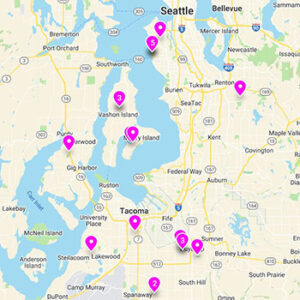For many people, the word “infrastructure” suggests images of roads, buildings, power supplies, and the like. But what if we could reframe our thinking so that our idea of infrastructure includes trees and forests? Educators in Puget Sound ESD (121) recently explored this idea in a workshop with Pacific Education Institute (PEI) FieldSTEM Coordinators Tressa Arbow and Lara Tukarski. In this three-part workshop focused on PEI’s Urban Forestry Solutions Oriented Learning Storylines, participants met twice virtually and visited a local urban forest between sessions.
 Each virtual session began with participants going outdoors to analyze existing and potential tree canopy in their area. Educators integrated science, technology, engineering, and math content by sketching and calculating existing tree canopy, evaluating the benefits of existing trees and proposing additional trees to solve local problems, and exploring tools like iTree and Tree Equity maps. They also examined how tree canopy relates to environmental health and explored the connections between green space and environmental justice.
Each virtual session began with participants going outdoors to analyze existing and potential tree canopy in their area. Educators integrated science, technology, engineering, and math content by sketching and calculating existing tree canopy, evaluating the benefits of existing trees and proposing additional trees to solve local problems, and exploring tools like iTree and Tree Equity maps. They also examined how tree canopy relates to environmental health and explored the connections between green space and environmental justice.
To supplement their learning, participants heard from Dr. Joey Hulbert, Director of the Forest Health Watch Program and postdoctoral researcher at the WSU Puyallup Research and Extension Center. Dr. Hulbert shared background and current research in urban forestry, as well as a variety of forestry projects educators can involve their students in.
In post-workshop evaluations, participants reported increased confidence in teaching Next Generation Science Standards (NGSS) climate science-related topics, implementing NGSS-based 3-dimensional learning, and providing inclusive experiences for diverse groups of students. The highlight for most educators was the asynchronous assignment to visit and research a local urban forest. In the shared map they created to document their visits, individuals shared appreciation for an opportunity to get outdoors and reflect on the benefits of green space. One participant said, “Benefits of these trees to the community: they prevent erosion, cool area with shade, provides habitat for birds and animals, offer beauty, and healing benefits from pine aerosol. But my favorite observation was a grade school age boy running through the trees with a sword and shield. The benefit of unplugging a child from screens and sparking his imagination is incalculable.”




